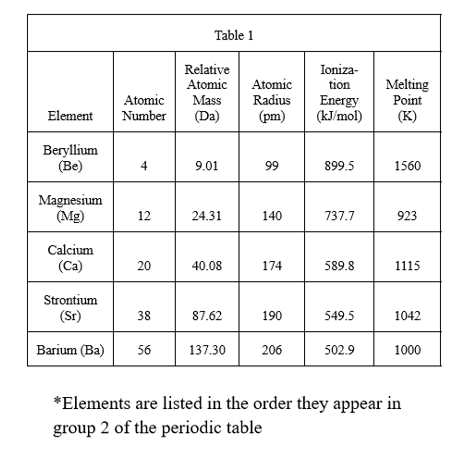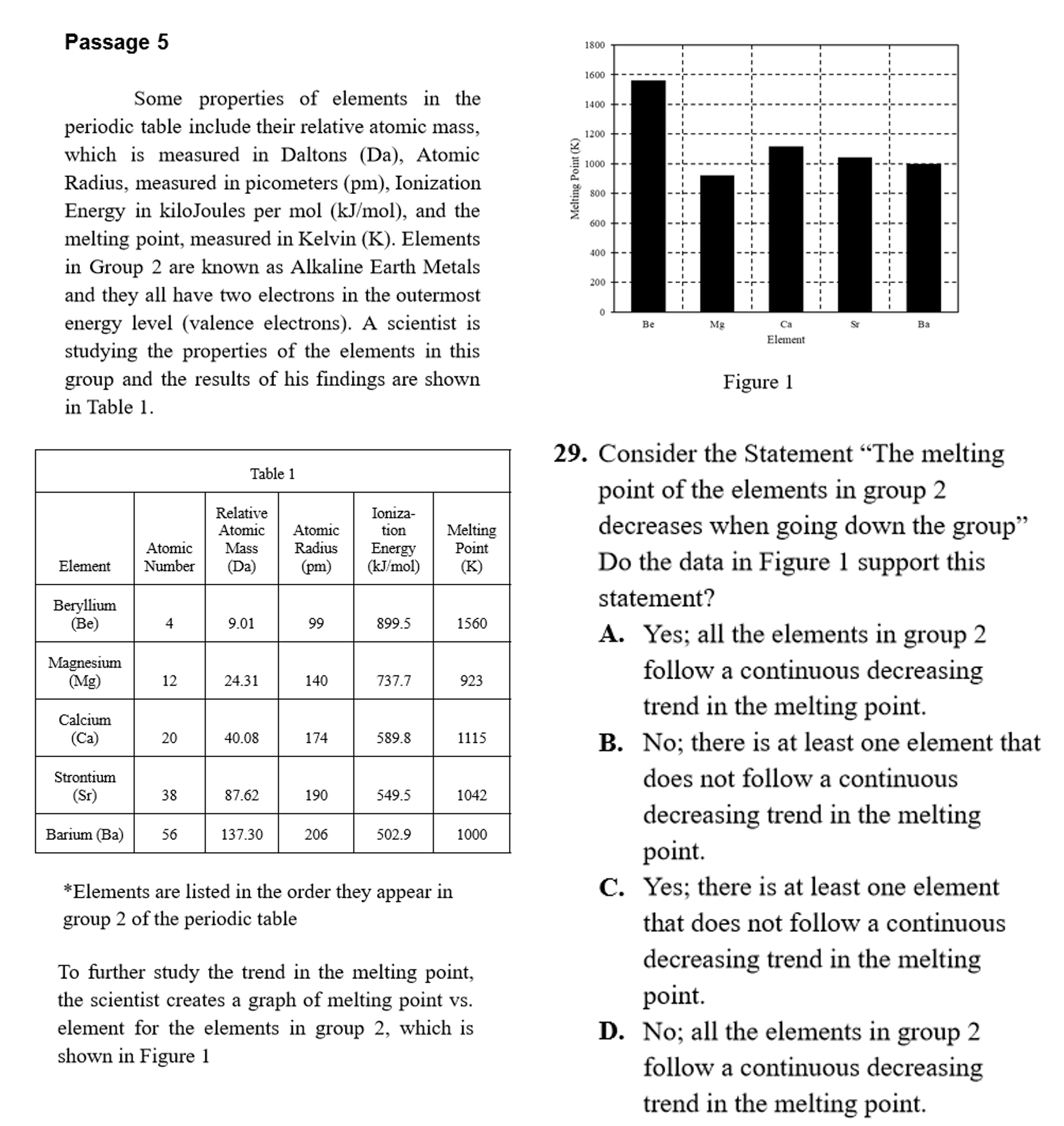On the science test, a figure refers to a graph, chart, table, diagram, or other image related to the passage. A lot of the simpler questions in the science portion have you look at just a single figure to find the answer.
The best place to start with these questions is to be sure that you are looking at the right figure. This might sound obvious, but it’s easy to get lost in all the figures. Most questions tell you exactly where to look. Other questions give you information that relates to a single figure. In these cases, it is important to look for relevant themes between the question and the figures. If the question asks you to find volume and there is only one graph that measures volume, then you know which figure to use!
A figure can have so much information that you feel like you don’t understand how you should use it. However, sometimes you don’t need to understand it all! In these cases, you should look for shared themes between the question and the figure. For instance, a figure might have the mass, volume, density, and temperature of some chemicals. If the question asks about temperature, then that means you can look at that property and ignore the rest of them (at least for this question). This is not always the case, but it is a good habit to shine a spotlight on the exact place where you will find your answer.
Occasionally, a figure will have additional information above or below it. Information above the figure usually contains unnecessary information that describes what the figure is. Sometimes there may be useful information above a figure, but it is not typical. Information below the figure is usually showing the source of the figure, so it is really easy to overlook this area. Sometimes, the test will put extra critical information under the figure with an asterisk (*) next to it to indicate that it is important information. See the figure below for an example:

Be on the lookout for asterisks beneath figures because they will help you out!
Some questions will require you to use various figures within the passage. This can get confusing at times, so take note of which figures you will need to use and make sure you use them all (or at least understand why the question includes all of them). You may be able to answer the question without using all of the figures, but this is usually because you take a shortcut. If you are going to take this shortcut, make sure you understand why it is appropriate for you to ignore one or more of the figures mentioned by the question. If you don’t have a decent reason, you may need to go back and try to use all of the figures.
Determine where to start by working from the information you are given in a question. The most difficult form of these kinds of questions is doing a scavenger hunt of data. With so much to work with, your main goal is to be confident with your starting point. These questions give you enough information to get a value or conclusion from one figure. Then, after you have found that new piece of data, you can move to the next figure to get the conclusion from that second figure. Even if it seems like you have enough values to solve the problem from the start, pick a single figure to be your starting point. If you get stuck, try using the other figure as your starting point instead.
Below is an example of a multiple-figure question. Try to solve this question and identify the key elements that we’ve talked about so far.

Can you solve this question?
Answer: B.
We first look at Table 1 to determine the “order” of the group, since the question asks us about “going down the group.” We see that the order in Table 1 matches the order in Figure 1. This means that “going down the group” is equivalent to moving right across the x axis in Figure 1. The bar for Mg is lower than the bar for Ca, the one after it, so answer B best explains why the data do not support the statement in the problem.